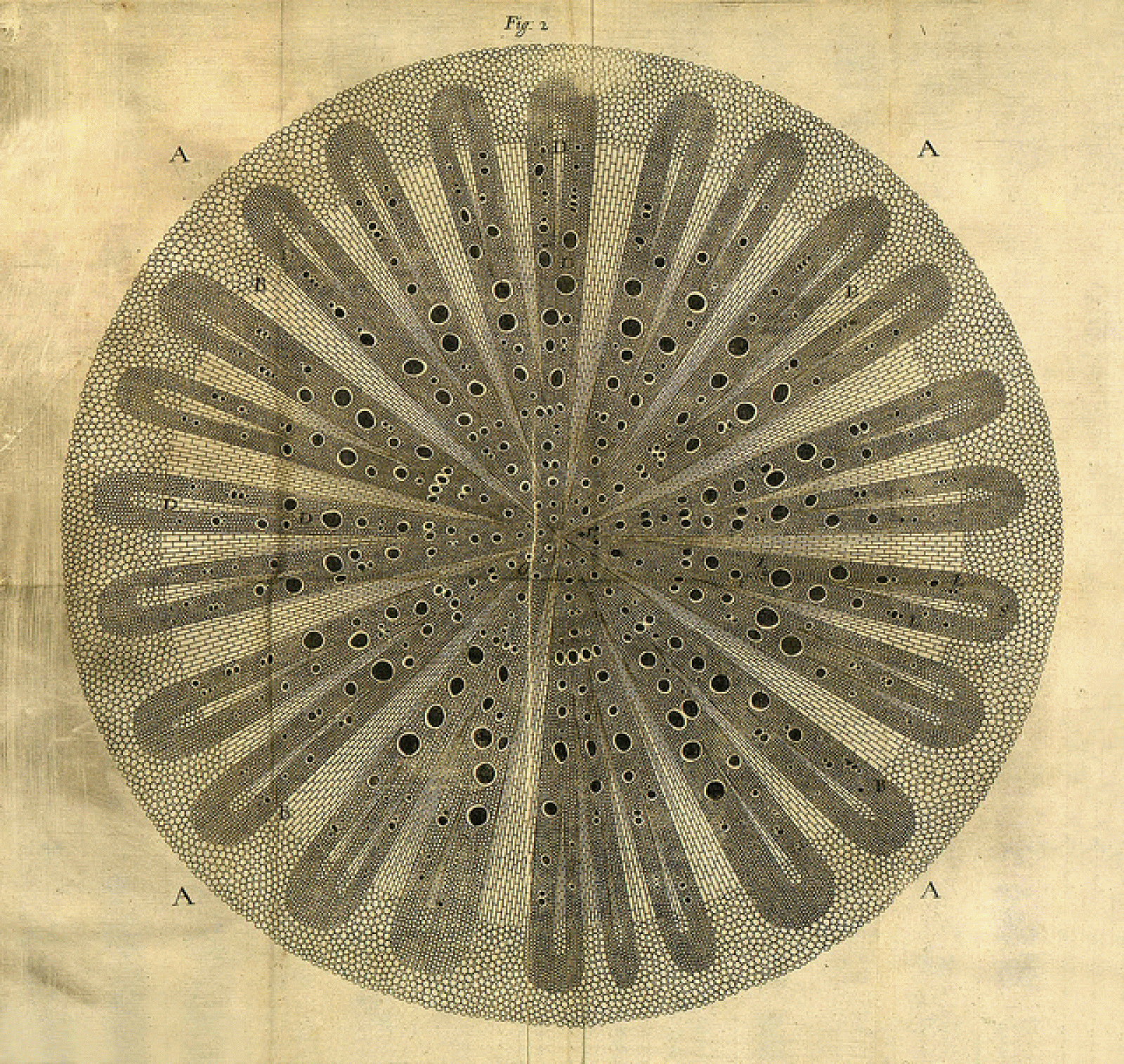Ricerca
Microscope/Macrocosm: Early Modern Technology, Visualization and Representations of Nature
Pamela Mackenzie

Nehemiah Grew, “Vine-Root cut transversely” Anatomy of Plants, 1680. Image Source: Public Domain Review, https://publicdomainreview.org/essay/the-life-and-work-of-nehemiah-grew
This research project focuses on visual epistemology and representations of nature in the seventeenth century – a time that saw the earliest systematic experimentations with the technologies of vision that allowed people to see beyond the normal constraints of the unaided eye. Particular relevance is given to the role of the microscope in giving rise to new perceptions of the world, and the ways in which these discoveries were supported by visualizations circulating across the European intellectual communities in the form of books and letters. Mackenzie focuses on the botanical illustrations in Nehemiah Grew’s Anatomy of Plants, one of the first detailed explorations of plant life carried out with the aid of a microscope. The things he discovered through the lens he had no language to describe, meaning that many of the engravings that accompany his publications appear to be quite abstract and schematic. They often look more like a series of maps or mathematical diagrams than traditional botanical illustrations. During her research stay, Mackenzie will be considering the visual form of Grew’s illustrations under the lens of the cartographic tradition, as well as the implications of this way of imagining the microscopic world geographically – as a place to be surveyed and conquered.
This project is part of the Research and Fellowship Program 4A Laboratory: Art Histories, Archaeologies, Anthropologies, Aesthetics, a cooperation between the Kunsthistorisches Institut in Florenz and the Stiftung Preußischer Kulturbesitz.


